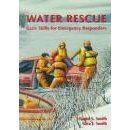3/26/2014· Warnings & Labels
Warnings: When Do They Help, When Do They Hurt?
In essence, to warn is to place someone on advance notice of a danger or a potential danger. To warn requires that the person or people giving the warning have a superior knowledge of the harm or potential harm compared to the person or people exposed. Further, the person or the people who are warning must also have a superior knowledge of the means of reducing either the likelihood and/or the magnitude of the harm or potential harm as compared with the person or people exposed.












